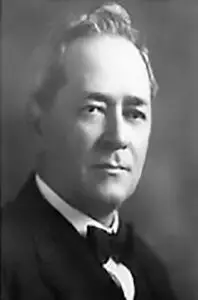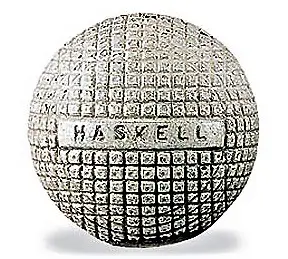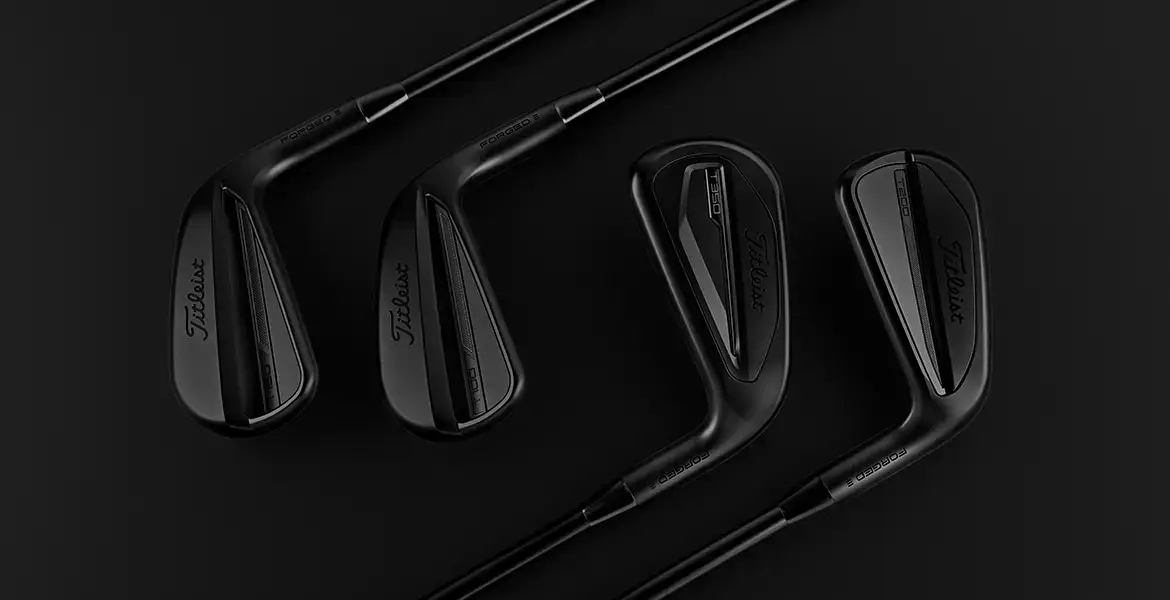One of the greatest innovations in golf equipment was made by a mediocre player from Cleveland
Throughout golf history, as goes the ball so goes the game.
The “featherie” ball first played in the 1600s—a leather sack stuffed with goose feathers—was handmade and expensive, about four shillings each when the average tradesman made six shillings a week, keeping golf a game only for the wealthy. Costs came down significantly in the mid-1800s with the discovery that gutta-percha, a rubber-like sap from Southeast Asia, could be mass-produced into balls that flew farther, rolled truer, and lasted longer than featheries.

It was also during the “guttie” era that players realized that the nicks, scratches, and other imperfections they were making on the ball’s surface improved its flight. Soon, balls were being produced with patterns of raised dots, called “brambles.”
But it was the next innovation in ball-making, credited to a high-handicapper from Ohio, that arguably had the greatest impact of all, bringing distance, consistency, and predictability to ball flight and masses to the game.
Coburn Haskell, born in Boston on the last day of 1868, moved to Cleveland in 1892 to take a job with the M.A. Hanna Company, processors of iron ore. He spent the rest of his life in the area, marrying, having children, and enjoying sports, notably golf. He was a member of The Country Club, where one of his playing partners was Bertram Work, who worked at the B.F. Goodrich Company in Akron, which, among other things, produced gutta-percha balls.
The story goes that one day in 1898, Haskell went to the Goodrich plant to meet his friend, who was busy. Haskell—who may or may not have just come off a particularly bad round played with a guttie—killed time by strolling along the factory floor. Coming upon a pile of rubber bands, he began stretching and winding them around a little rubber ball, tossing it against a wall and noticing how far it bounced.
He and Work created a prototype ball, wound rubber around a rubber core, which was patented in April, 1899. To cover the windings, they used gutta-percha, later trying harder substances like balata, a more resilient tree sap. On the same day their patent was issued, another was granted to John Gammeter, who also worked at Goodrich, for a machine that automatically wound rubber thread around a core. (This was one of more than 300 patents Gammeter received, including for mass-producing rubber bands, numerous aviation innovations, and an improved condom.)
Tests of the ball by Country Club members and others showed distance gains of more than 20 yards and much more control than with the gutty. In 1901, the Haskell Golf Ball Company was formed, holding exclusive worldwide rights on the wound-ball process. That same year, Walter Travis used a Haskell to win the U.S. Amateur, followed the next year by Alex Herd winning the Open Championship with one.
The first Haskells were exceptionally lively, gaining the nickname “bounding billies” and infuriating traditionalists. In search of more control, the company experimented with cover materials and thickness, the tension of the windings, and the brambles on the cover (dimples were still a few years away). Very quickly, wound balls replaced solid, remaining the favorite of pros and amateurs until the early 2000s.

The acceptance of wound balls had at least one other major effect. The combination of tightly wound rubber and more durable covers made the balls too hard for contemporary golf clubs. Manufacturers responded by using harder woods, like persimmon, and face inserts of various materials, like plastic, ivory, even metal.
Haskell dissolved his company in 1917, selling its patents to other manufacturers. He died five years later, leaving an estate worth more than $138 million today.





